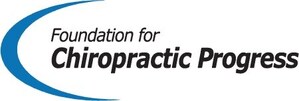SAN JOSE, Calif., May 20, 2021 /PRNewswire/ -- The Foundation for Chiropractic Progress (F4CP), a not-for-profit organization dedicated to educating the public about the benefits of chiropractic care, applauds the findings of a recent study published in the peer-reviewed journal Spine which showcases that a treatment most-often delivered by doctors of chiropractic (DCs) is far safer than opioids for managing chronic low back pain (LBP).
The study, "Initial Choice of Spinal Manipulative Therapy for Treatment of Chronic Low Back Pain Leads to Reduced Long-term Risk of Adverse Drug Events Among Older Medicare Beneficiaries" found that harmful medication-related incidents occurred 42 times more often in patients who were first prescribed opioids as opposed to patients who first received spinal manipulative therapy (SMT). DCs deliver nearly 97% of SMT in the U.S., according to a recent analysis of claims data covering a 12-month experience in a national commercially insured population. Adverse drug events can include medication errors, overdoses or other drug reactions that cause harm to the patient.
"This groundbreaking study adds to the growing volume of research that opioids are not only ineffective for treating low back pain, but are dangerous to patients, especially seniors," said Sherry McAllister, DC, president of the F4CP. "Spinal manipulative therapy, a drug-free approach that is overwhelmingly delivered by doctors of chiropractic, is a substantially safer long-term approach that yields better outcomes. This is persuasive evidence that SMT should be a first-line treatment for older adults with chronic low back pain."
A Drug-Free Approach
Study authors, who included DCs, medical doctors and other healthcare researchers, analyzed five years of Medicare claims data for seniors aged 65 to 84 years old who had an episode of chronic LBP in 2013. They compared seniors who received outpatient opioid therapy only and those who received SMT only, as well as those who switched therapies, searching for patients who experienced an adverse drug event at any point.
Even when controlling for patient characteristics and health status, the adjusted rate of adverse drug events was more than 42 times higher for patients who received opioids first versus those who initially received SMT.
The study supports other recently published research demonstrating the efficacy of SMT over opioids. For example, in February, the Journal of American Medical Association (JAMA Network Open) published a study that found the transition from acute to chronic low LBP increased correspondingly with early exposure to non-concordant guidelines, such as prescribing opioids.
Payment Reform Needed
Low back pain is the leading cause of disability in the United States, representing twice the burden of any other health condition. Treatment for LBP and related spine disorders now represents the most expensive medical problem in the U.S., with most costs accrued in ambulatory care settings, including primary care. Chronic LBP contributes most to long-term disability, morbidity, healthcare and societal costs.
Given chronic LBP's significant impact on patients and the economy, F4CP advocates passage of the Chiropractic Medicare Coverage Modernization Act (H.R. 2654), which was reintroduced in the U.S. House of Representatives in April. The bill, in its current draft, requires the Center for Medicare and Medicaid Services (CMS) to cover non-SMT treatments that are delivered by DCs such as joint mobilization, physiological therapies, soft tissue massage techniques and others, which are already covered by commercial health plans and the Veterans Administration.
"Millions of seniors and other patients rely on their doctors of chiropractic for a wide range of services beyond spinal manipulative therapy to help them reach their pain management, mobility and overall health goals," Dr. McAllister added. "We encourage CMS to revisit a payment policy that has not been updated in nearly 50 years."
Furthermore, patients with chronic LBP who receive SMT from a DC had lower costs, fewer disability days and more pain-free days than the control group (source: Journal of Manipulative and Physiological Therapeutics). Likewise, SMT delivered by a DC combined with recommended home exercises also resulted in better outcomes for seniors with chronic neck pain and costs nearly half as much versus home exercises and supervised rehabilitation exercise, according to a study published in Spine Journal in 2016.
Dr. McAllister continued: "We urge Congress to educate themselves about the optimal health outcomes that DCs help seniors achieve without opioids or any pharmaceutical drug. Passing this important legislation is a step in the right direction toward reducing healthcare costs while, more importantly, improving the health and well-being of our nation's seniors."
To access additional research in support of chiropractic care and the efficacy of spinal manipulation, visit https://www.f4cp.org/new-research/.
About the Foundation for Chiropractic Progress
A not-for-profit organization with nearly 29,000 members, the Foundation for Chiropractic Progress (F4CP) informs and educates the general public about the value of chiropractic care delivered by doctors of chiropractic (DC) and its role in drug-free pain management. Visit www.f4cp.org/findadoctor; call 866-901-F4CP (3427).
SOURCE Foundation for Chiropractic Progress

WANT YOUR COMPANY'S NEWS FEATURED ON PRNEWSWIRE.COM?
Newsrooms &
Influencers
Digital Media
Outlets
Journalists
Opted In




Share this article